Every company has its own way of building a team, but most don’t stop to think about the structure behind it: the hiring model. Your hiring model defines how you find, evaluate, and bring people on board.
Whether you’re a startup filling its first key roles or a large organization scaling fast, choosing the right model can make the difference between steady growth and costly turnover.
What Is a Hiring Model?
At its core, a hiring model is the framework that shapes every step of recruitment. It covers how jobs are posted, which candidates are targeted, how interviews are run, and who makes the final decision.
Some models lean heavily on in-house HR teams, while others rely on outside staffing firms or hybrid approaches. The point isn’t to find a “perfect” model, but one that aligns with your business’s size, resources, and long-term goals.
Common Types of Hiring Models
Different hiring models exist because businesses have different needs.
The traditional in-house model puts your HR department in full control, while an outsourced model partners with a staffing agency for speed and expertise.
Hybrid models combine both, keeping strategy internal while outsourcing high-volume or hard-to-fill roles.
Project-based hiring models are useful for seasonal or contract-heavy industries, while direct placement models make sense when you’re looking for leadership or niche skill sets.
How to Choose the Right Approach
Start by asking: what roles do you need most, and how quickly?
If you’re focused on long-term cultural fit, an in-house or hybrid hiring model may serve you best.
If speed and specialized skills are the priority, an outsourced or project-based model might be smarter.
Cost also plays a role: handling everything internally requires more overhead, but outsourcing comes with fees.
The right balance depends on whether you value control, speed, or flexibility most.
Looking Ahead: Adapting Your Hiring Model
Hiring models aren’t static. What works for a ten-person startup won’t fit a thousand-person enterprise, and vice versa.
As business needs shift, companies often evolve from one model to another. The most successful organizations review their approach regularly, testing new strategies and adapting as markets change.
Thinking about hiring models as a living system not a fixed process, helps keep recruitment aligned with growth.

Final Thoughts
The hiring model you choose shapes your workforce more than any single job description ever could. By understanding different types of hiring models and matching them to your company’s needs, you can reduce turnover, improve efficiency, and build stronger teams.
Looking for a hiring model that works in practice, not just on paper?
Let’s talk about how we can support your hiring goals.









